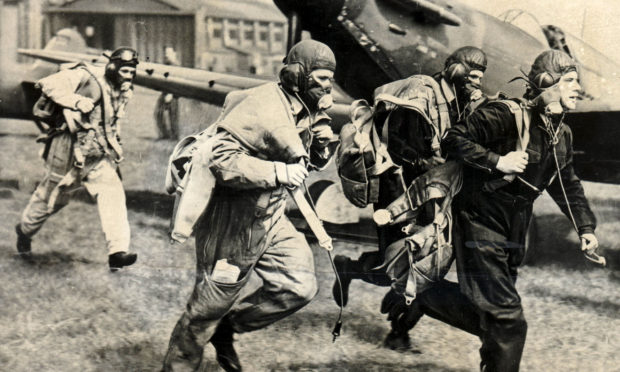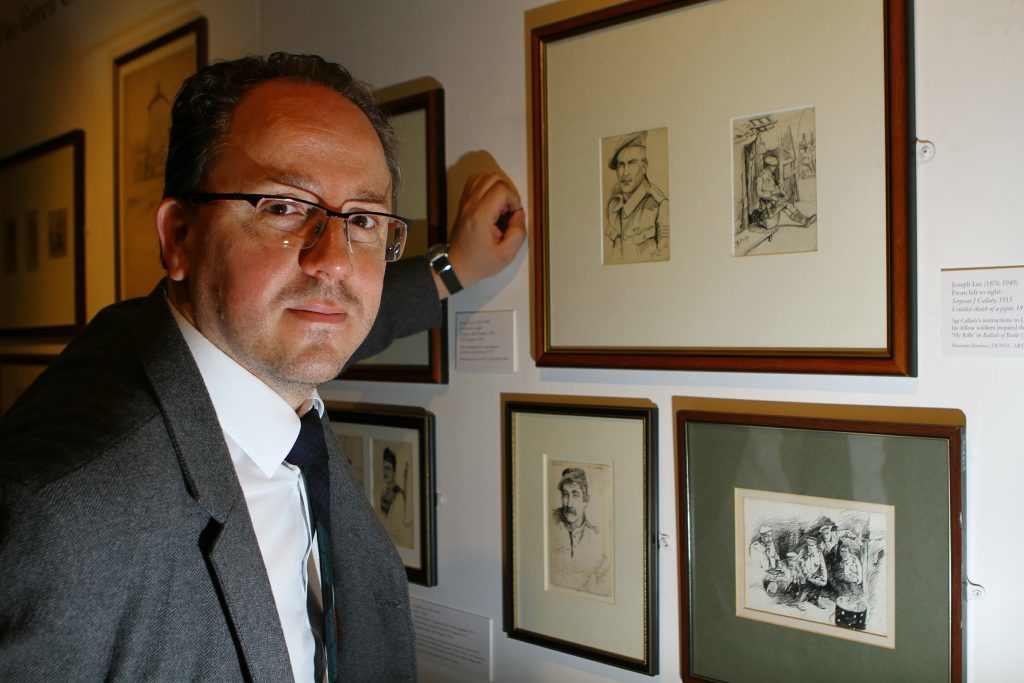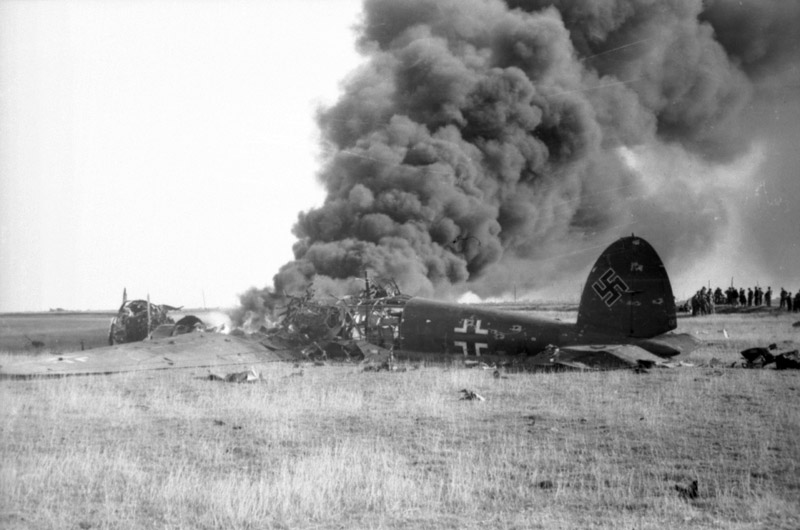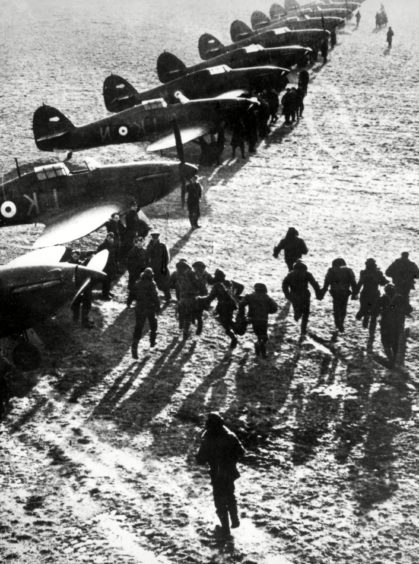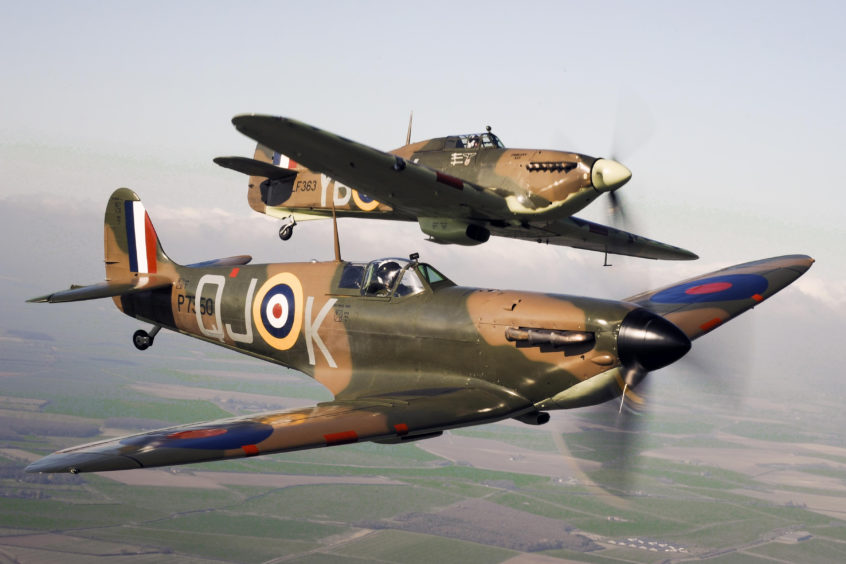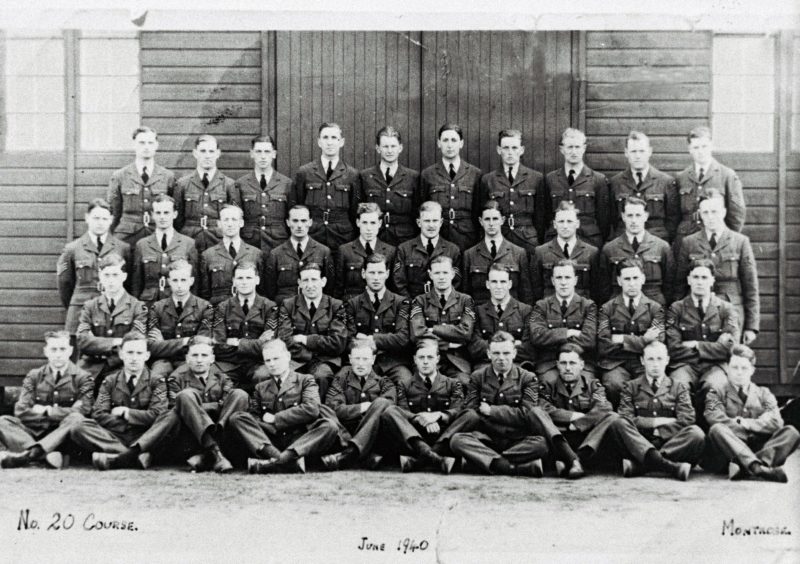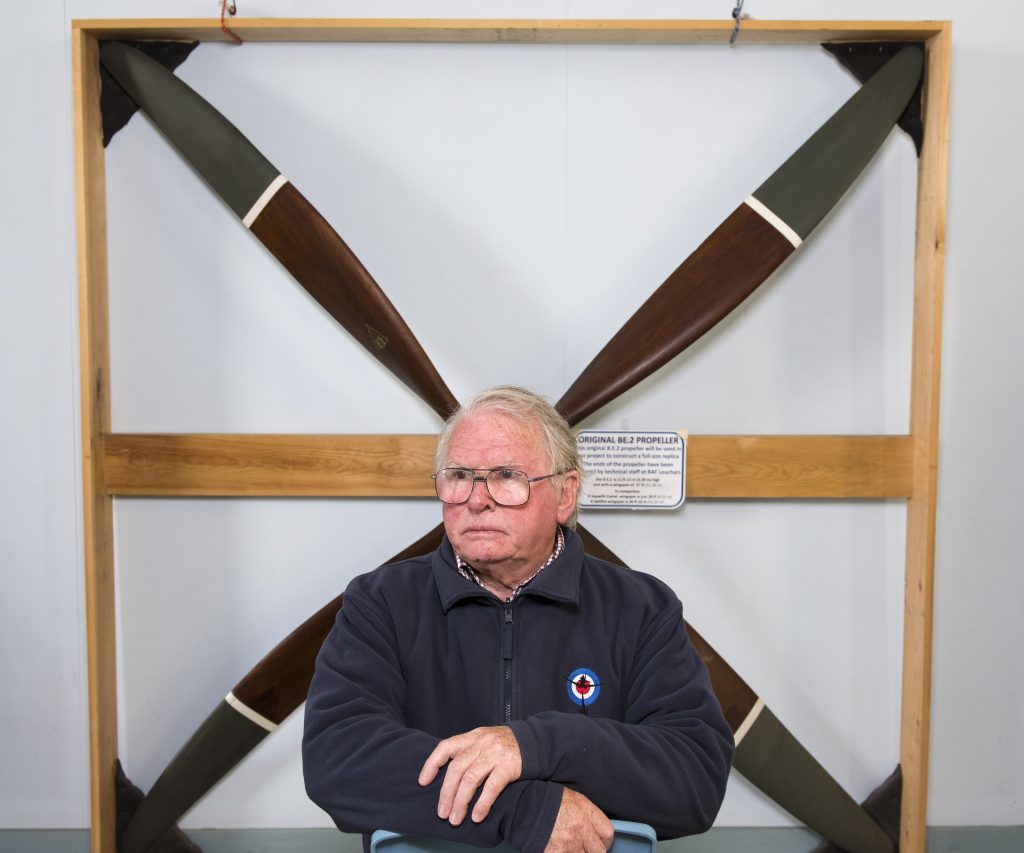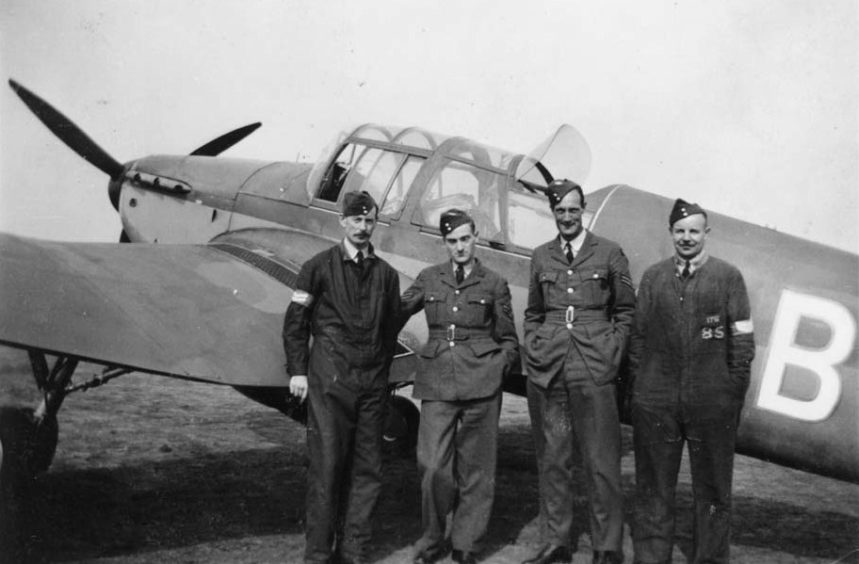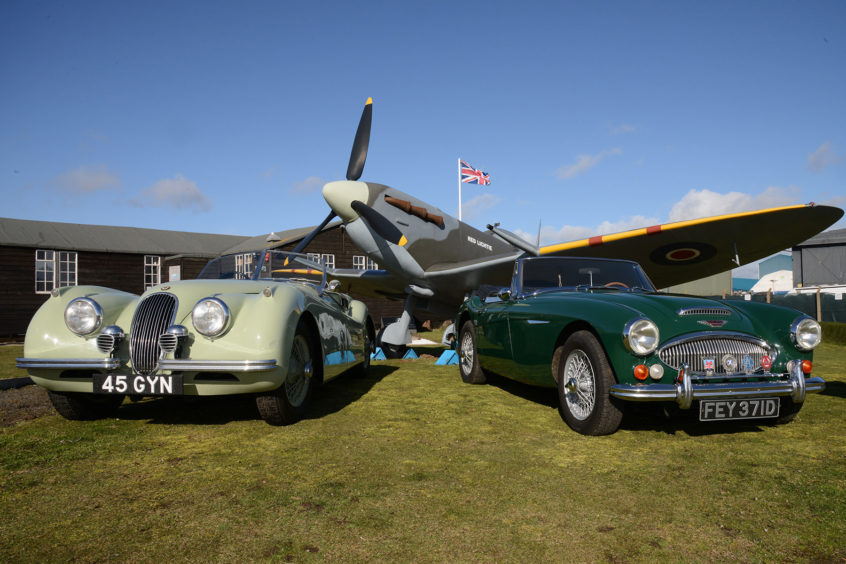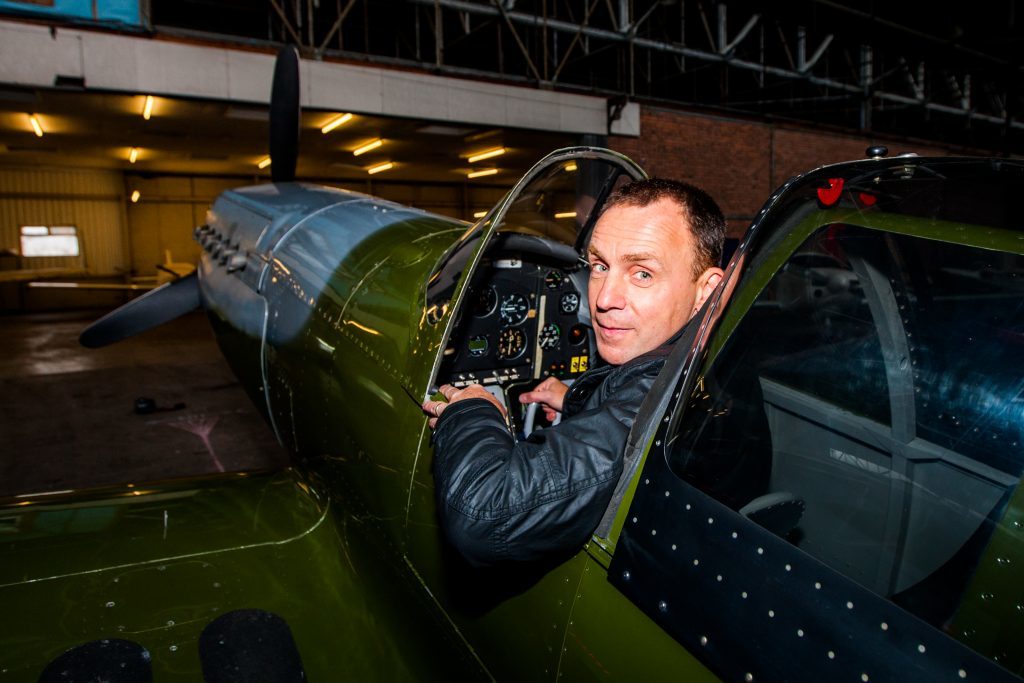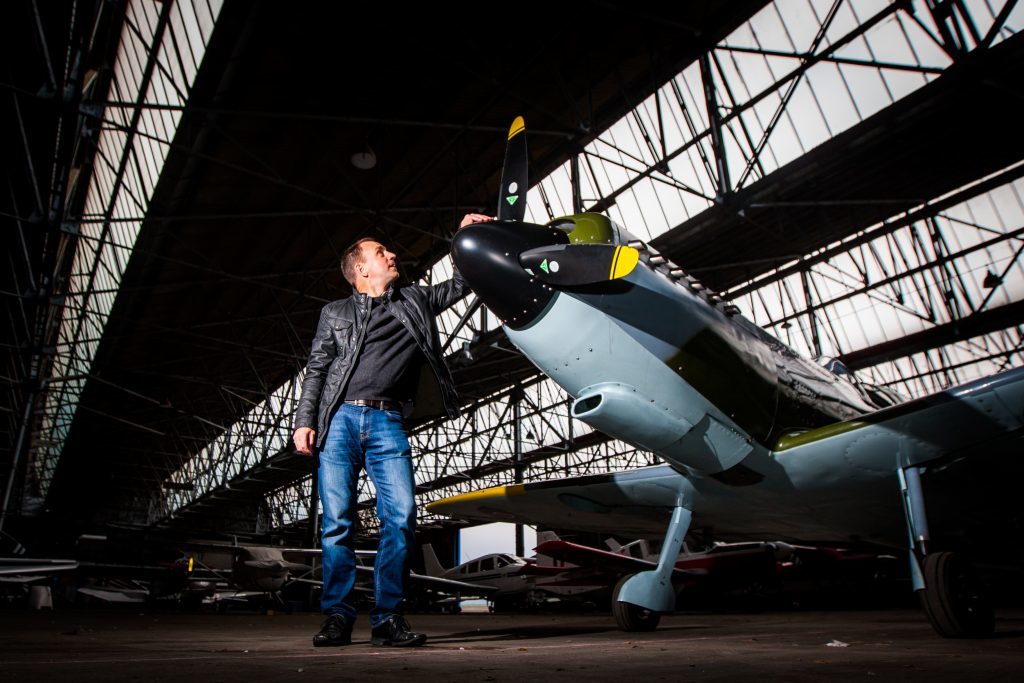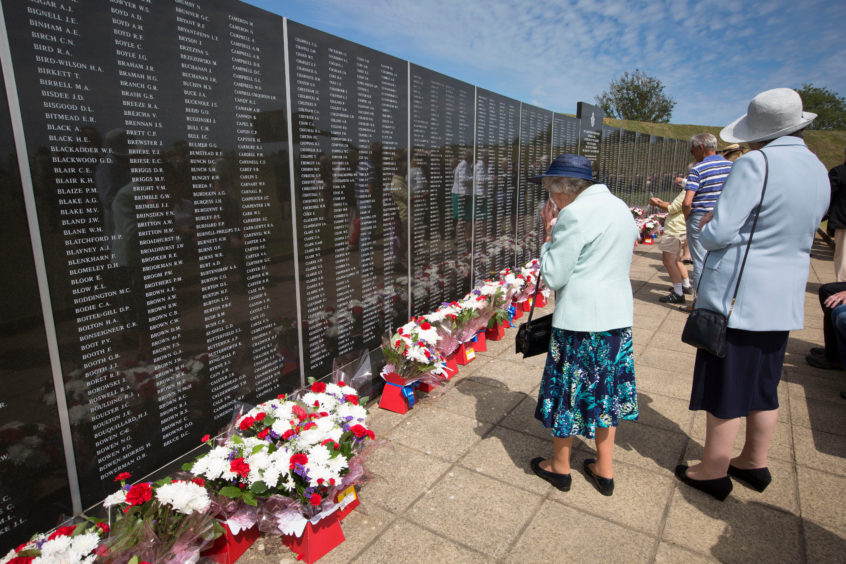As the 80th anniversary of the start of the Battle of Britain is commemorated, Michael Alexander speaks to some of those keeping the “pivotal” moment in Second World War history alive.
Eighty years ago this summer, as Nazi Germany’s seemingly unstoppable Wehrmacht swept through France and drove the exhausted British Army off the beaches at Dunkirk, Britain braced itself for invasion.
What followed between July 10 and October 31, 1940, was the first battle in history waged almost exclusively in the air as Luftwaffe aircraft streamed over Britain with the intent of gaining air superiority and bombing the nation into quick submission.
But the vastly outnumbered pilots of the RAF, who Churchill famously called “The Few”, had other ideas as they stood up to wave after wave of German fighters and bombers sending a clear message to Hitler that Britain would never surrender.
Today the Battle of Britain is regarded as a pivotal moment when Britain stood alone.
By October 1940, Hitler called off his invasion plans and the Luftwaffe switched to bombing British cities – ultimately turning his attention to the Eastern Front with Russia instead.
It was a key turn of events that eventually led to the unconditional surrender of Nazi Germany nearly five years later.
But according to St Andrews University historian Dr Derek Patrick, even if the Luftwaffe had obliterated the RAF, it would still have been a “very costly undertaking” for Germany to then invade by sea.
“If you look at what was going on in Europe the Blitzkrieg had steamrollered most of Europe, France had fallen and we were on the verge of the same,” said Dr Patrick.
“With Britain on the back-foot and France out of the war, the Germans had been looking at the whole idea of an amphibious assault on the UK with Operation Sealion.
“But the simple fact was that the logistics of that would have proved really difficult. When the Royal Navy still commanded the English Channel it would have been a very costly undertaking, although without the RAF, the Germans would have had easy pickings targeting Royal Navy vessels.”
Dr Patrick said there’s no doubt that had the Battle of Britain gone the other way, the war could have had a “totally different outcome”.
The Germans were potentially pushing for a negotiated peace or British neutrality – a move that, if successful, would have pushed Britain out of the war.
But with the British refusing to back down or leave Europe to its fate, the battle raged on.
The Luftwaffe initially targeted industrial areas and naval targets in the south and south east of England. The focus then turned to the RAF and the idea of neutralising Fighter Command.
By the end of October 1940, the Allies had lost 1,547 aircraft and suffered 966 casualties, including 522 deaths.
The Axis’ casualties – which were mostly German – included 1,887 aircraft and 4,303 aircrew, of whom 3,336 died.
In the latter stages of the Battle of Britain, however, the emphasis shifted to German “terror bombing” of civilian targets, overlapping with what became known as the London Blitz between September 1940 and May 1941.
“When we think of the Battle of Britain we think of airfields in the south of England which are ‘first responders’ if you like against these waves of German bombers coming over,” Dr Patrick said.
“But we also need to remember too that there are a lot of people from other countries as well – not just the UK.
“I think 20% of the pilots who participated (with the RAF) in the Battle of Britain came from places like Canada, New Zealand – Americans, French, Belgians, Czechs, Poles.
“One of the Polish squadrons was one of the highest scoring squadrons in the whole of the Battle of Britain.
“It’s quite a cosmopolitan effort in a lot of respects.
“It’s also important because this is the first time that the German military who’ve conquered everything that stands in their way has known defeat.
“The other context too is the whole outcome of the battle with the Americans sitting watching and waiting in the wings.
“Initially some Americans had been a bit dubious about Britain’s ability to stand up independently alone at that point.
“After the Battle of Britain it maybe shifted American opinion that Britain would survive and Britain could use some support here.”
The British-built Spitfire, with its characteristically thin elliptical wings, battery of machine guns and powerful Rolls-Royce Merlin engine, became an icon of the Battle of Britain.
Today, only a handful of serviceable Spitfires survive.
But one place that keeps the heritage alive is Montrose Air Station Heritage Centre – home to Britain’s first operational military airfield set up by the Royal Flying Corps in 1913.
RAF Montrose was home to No8 Flying Training School which opened in 1936 to train pilots for potential war.
The majority at Montrose were trained to fly bombers. But many of the men who got their wings went on to fly Spitfires, including some of the great “Aces” like Wing Commander Tom Neil who scored a total of 14 kills during the conflict.
Dr Dan Paton, 78, a retired university history lecturer who volunteers as an historian at Montrose Air Station, explained that between 1936 and the Battle of Britain in 1940, about 500 pilots earned their wings at Montrose.
In the early stages of the Battle of Britain, it was also the base for No 603 Squadron, one of the first to be equipped with Spitfires.
Its airfield defence role saw it in action against Luftwaffe bombers flying from occupied Norway.
However, some of the earliest aerial fighting of the Second World War actually took place in the so-called ‘Battle of Scotland’.
“With Scotland in range of Luftwaffe bombers flying from Germany and later Stavanger in Norway, the first RAF casualty of the war was Lt “Tiny” Burrell of No 269 Coastal Command Squadron flying from Montrose on September 6 1939,”said Dr Paton.
“The first civilian casualty of enemy bombing was in Orkney.
“The first German aircraft to be brought down on British soil was a Heinkel 111 bomber shot down by Spitfires of No 603 (City of Edinburgh) Squadron.
“Then when the Germans unexpectedly conquered France the whole focus of the battle moved down there.”
Dr Paton said those early skirmishes provided invaluable combat experience for 603 Squadron which was posted to Biggin Hill to be at the heart of the RAF’s Battle of Britain effort.
There the German bombers were arriving in large formations, escorted by German fighters.
But casualties soon mounted: Richard Hillary, for example, who later achieved fame by writing of his experiences in “The Last Enemy”, one of the classics of the air war, was shot down and badly burned – the fate of many fighter pilots.
Dr Paton said the majority of the men who got their wings at Montrose in May 1940 went into bombers.
However, the arrival of a modern fighter trainer, the Miles Master, indicated a change in priorities.
All the men in No20 Course, for example, in the summer of 1940 were to be trained as fighter pilots.
This was recognised in 1942 when the people of Arbroath famously raised £5000 to buy their own Spitfire.
A full scale replica of the ‘Red Lichtie’ now stands proudly at the heritage centre.
“Training time had been cut so men from this course would have been in squadrons in the later stages of the battle when Fighter Command was desperately short of pilots,” he added.
“Unfortunately we do not have their names so we can’t check. But the Miles Master was a new aircraft, the first purpose designed advanced fighter the RAF ever had.
“It had a good performance and had the RAF run short of fighters the Master would have been used in action.
“A picture we have of a Master with four ground crew reminds us that Montrose was attacked on a number of occasions during the Battle of Britain. Two of those in the picture died.”
Sadly, all but one of Britain’s once 3000-strong ‘The Few’ have now gone.
Former Hurricane pilot, Wing Commander Paul Farnes, died peacefully at his home in Hampshire in January aged 101.
The death of radar operator Terry Clark, also aged 101, on the eve of VE Day in May, left John “Paddy” Hemingway as the last surviving Battle of Britain veteran.
However, one man who keeps the spirit of the Battle of Britain alive and knows what it’s like to fly an original – and a replica – Spitfire is leading Perth-based drill consultant and aviation enthusiast Iain Hutchison.
The 51-year-old father of three, who is engineering director with Merlin ERD, built and flies his own Spitfire from Perth Airport.
Having been bitten by the flying bug as a 14-year-old Mearns Academy pupil when he went on an air experience flight in a Cessna at Dundee Airport, he joined the university air squadron whilst an engineering student at Heriot Watt in Edinburgh – later securing his pilot’s licence whilst working in the USA.
It was while living in Perth, Australia, however, that the qualified display pilot learned about and built a Spitfire kit, which he shipped to the UK when he and his family moved home in 2007.
Iain said it would be “terrifying” to imagine what it must have been like to fly a Spitfire in anger.
“They say you don’t strap into a Spitfire, you strap a Spitfire on and you become part of the aircraft,” he added.
However, as an engineer, he’s particularly proud of the Spitifire’s iconic status.
“The thing that I particularly enjoy as an engineer trained in Britain and educated in Scotland and representing the UK around the world, is that this is a legendary piece of engineering,” he said.
“It’s well deserving of its reputation just like the Forth Bridge, Rolls Royce – all of these British icons.
“Whatever your politics are, its role in the Battle of Britain epitomises, to me, that when there’s a problem we all have to pull together – as we’ve seen through this ongoing (Covid-19) crisis.
“Britain was absolutely on the brink during the Battle of Britain and the Spitfire is the icon. It carries the headline if you wish. But let’s not forget the Hurricane was an absolute workhorse as well.”
For the last 30 years, the Battle of Britain Memorial Trust has been ensuring that what ‘The Few’ did for Britain is never forgotten.
A memorial and visitor centre in Capel-le-Ferne, Folkestone, tells the story of the Battle of Britain through an interactive exhibition.
Coronavirus has placed many charities under lockdown, meaning they are not able to carry out fundraising events which would have normally supported their income.
However, with the trust “struggling” to raise the £240,000 it needs each year, spokesman Malcolm Triggs said he hoped Courier readers would help back a crowdfunding appeal
https://www.crowdfunder.co.uk/save-the-national-memorial-to-the-few
and tune in to an online commemoration being held from 11am on Sunday July 12 to mark the battle’s 80th anniversary.
The trust’s Youtube channel and Facebook page will feature unique footage of the Battle of Britain Memorial Flight in action, plus other virtual events.
The virtual event will also include music from the Band of the RAF Regiment and an introduction from Air Chief Marshal Sir Stephen Dalton GCB, the president of the trust.
The Chief of the Air Staff, Air Chief Marshal Mike Wigston CBE ADC, will also feature and there will be contributions from some of the now departed members of The Few, including a film of Flt Lt William Walker reading his poem Our Wall in front of the Christopher Foxley-Norris Memorial Wall.
The chaplain will lead the Act of Remembrance, which will also feature the Hon Secretary of the Trust, Group Captain Patrick Tootal OBE DL and the chairman.
Family and friends will also pay their own tributes at this point, as well as serving members of the RAF, including aircrew who patrol Britain’s skies and defend the country today.
